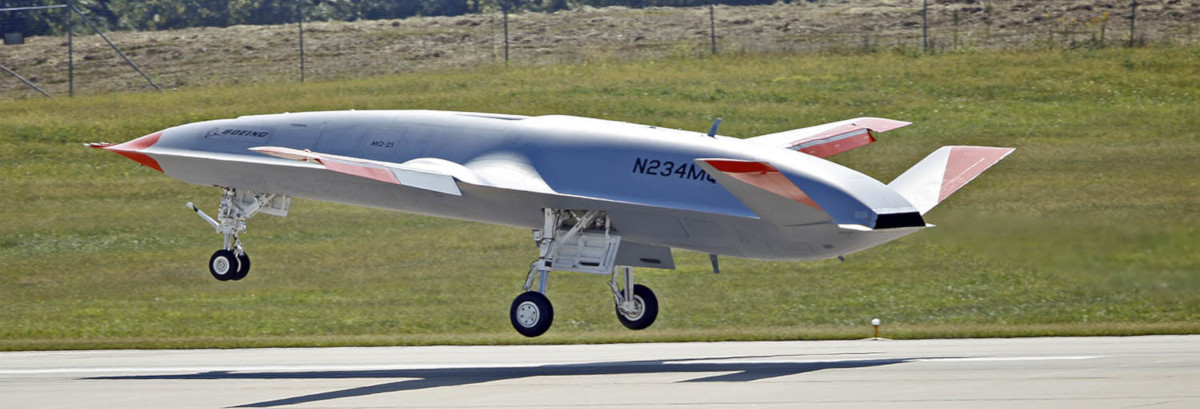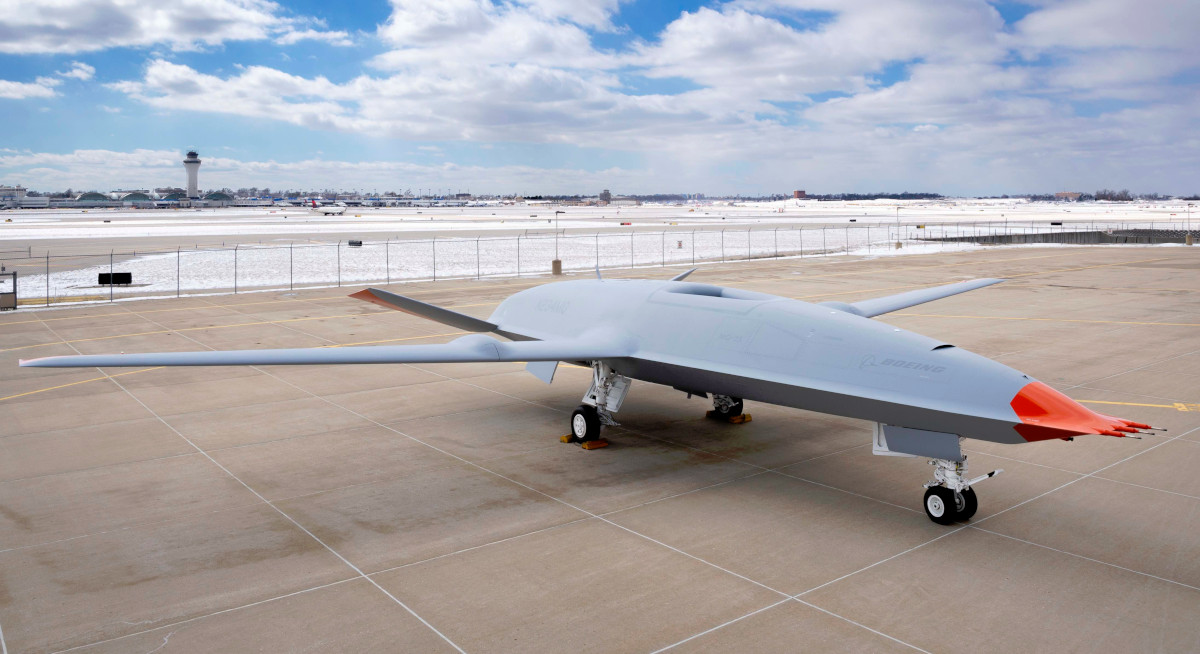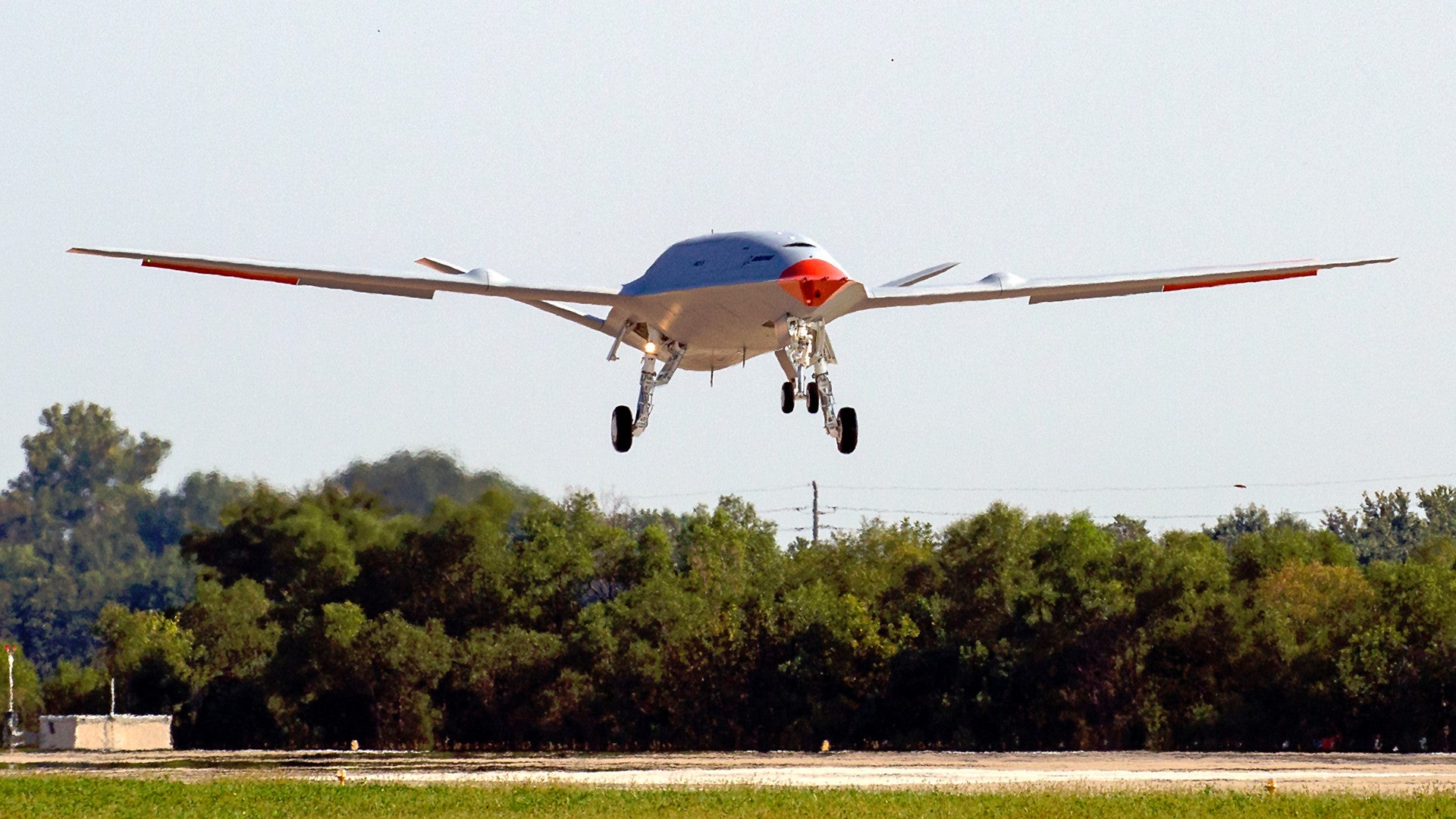Boeing’s MQ-25 Stingray carrier-based tanker drone test asset, known as T1, has flown for the first time at MidAmerica Airport in Mascoutah, Illinois. The company is developing the Stingray for the U.S. Navy and plans to continue testing T1 in the coming years as it works toward the first flight of a full engineering and manufacturing development prototype in 2021.
T1, short for “Tail 1,” which also carries the U.S. civil registration code N234MQ, conducted an autonomous taxi and takeoff and then flew an approximately two-hour-long predetermined route on Sept. 19, 2019. Boeing test pilots oversaw the unmanned aircraft’s flight from a ground control station at MidAmerica Airport, where this complete initial flight test program will occur. The drone arrived at the airport, which is co-located with the U.S. Air Force’s Scott Air Force Base, in April 2019. Boeing had conducted a variety of ground tests at its St. Louis plant before that.
“Today’s flight is an exciting and significant milestone for our program and the Navy,” U.S. Navy Captain Chad Reed, the service’s Unmanned Carrier Aviation (UCA) program manager, said in a statement. “The flight of this test asset two years before our first MQ-25 arrives represents the first big step in a series of early learning opportunities that are helping us progress toward delivery of a game-changing capability for the carrier air wing and strike group commanders.”
“Seeing [the] MQ-25 in the sky is a testament to our Boeing and Navy team working the technology, systems, and processes that are helping get [the] MQ-25 to the carrier,” Dave Bujold, Boeing’s MQ-25 Program Director, said in a separate press release. “This aircraft and its flight test program ensures we’re delivering the MQ-25 to the carrier fleet with the safety, reliability, and capability the U.S. Navy needs to conduct its vital mission.”

T1 received its experimental airworthiness certificate earlier in September, according to Boeing. This is a little over a year after the company won the $805 million contract, to develop and build the MQ-25, beating out General Atomics and Lockheed Martin. This was a major win for the company and a vindication of its pioneering unmanned aircraft developments in the early 2000s, despite years of subsequent disappointments, as the War Zone explored in-depth shortly after the contract award.
Experience with the test asset will help inform work on engineering and manufacturing development (EMD) prototypes, the first two of which the Navy expects to take delivery of in 2021. Boeing’s contract requires it to supply a total of four of these prototypes, along with ground control stations and other ancillary equipment and services, to the Navy by 2024.

“Part of what we’re doing by flying this test asset this year is figuring out how fast can we go,” U.S. Navy Rear Admiral Brian Corey, the Program Executive Officer for Unmanned Aviation and Strike Weapons, said at the Navy League’s 2019 Sea Air Space symposium in May 2019. “How much work can we get done on that vehicle before we build our first [contracted] vehicle?”
“By the time the Navy’s assets are jumping in the air, we will already have had thousands of test hours on the ground and hundreds in the air,” Boeing’s Bujold had told Defense One in an interview the month before.
The T1 test asset itself is a modified version of the unmanned combat air vehicle (UCAV) demonstrator that Boeing had initially developed for the Navy’s abortive Unmanned Carrier Launched Airborne Surveillance and Strike (UCLASS), a saga the War Zone has previously covered in detail, and which eventually evolved into the current UCA program and the MQ-25 Stingray.

The MQ-25 could have a revolutionary impact on the Navy’s carrier air wings and how they conduct operations. It will also ease the strain on the service’s F/A-18E/F Super Hornets, which presently spend considerable flight hours acting as small tankers for other carrier-based aircraft. You can read more about how the Stingray could change how the service’s carrier air wings operate in this past War Zone story.
With T1 now flying at MidAmerica Airport, we may begin to learn more about where Boeing expects to take this initial stage of the MQ-25’s development and what capabilities the unmanned aircraft already has now.
Contact the author: joe@thedrive.com
